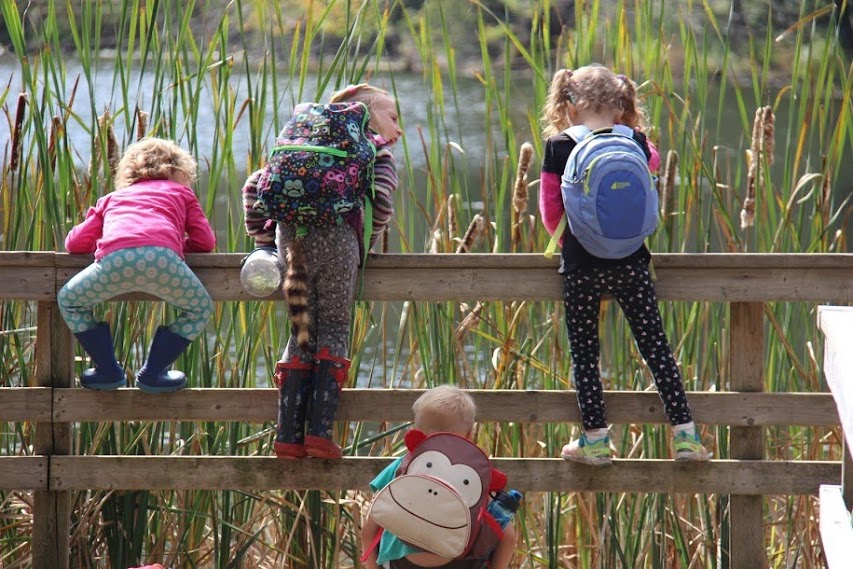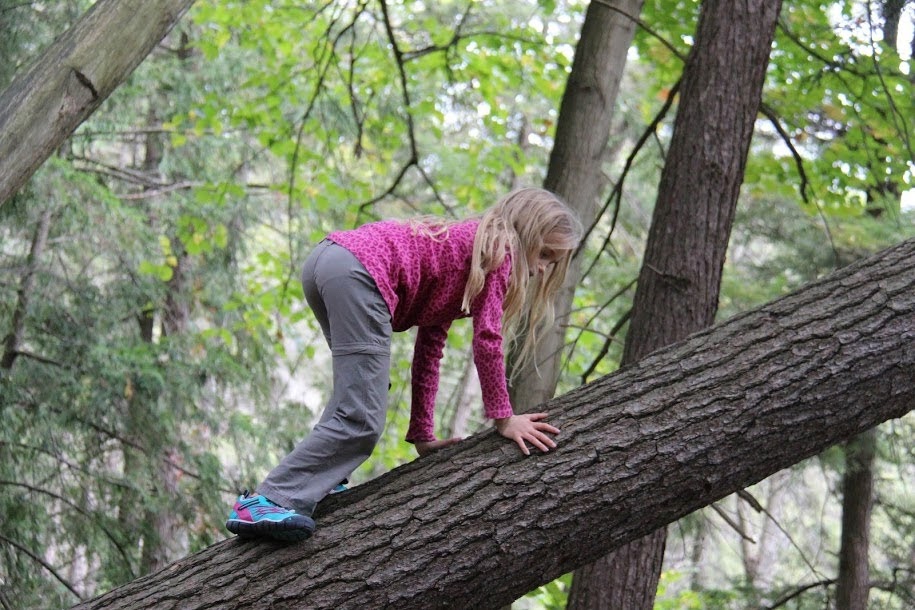|
Recently, I’ve been reflecting on placemaking – a key principle of forest and nature school programs. It has been defined as “regular, repeated access to the same natural space.” The Project for Public Spaces explains it like this: “Placemaking inspires people to collectively reimagine and reinvent public spaces as the heart of every community. Strengthening the connection between people and the places they share, placemaking refers to a collaborative process” (https://www.pps.org/category/placemaking). At Kitchener Forest School, we have collectively reimagined spaces at the park. The younger groups often play at a place we call "Muskrat Bay." It used to just be a place that one of the trails went through. The older groups often go to a place that we call "Coyote Corners" – which used to just be a space off the trail. The names grew out of creatures, and evidence of creatures, that we observed with our groups. The names evolved over time, just as our knowledge of the creatures that shared the land evolved. These spaces have become the heart of our forest school communities - places where we play, learn, and observe the changes each week. Children learn to feel comfortable in that space. It is that space where memories are made each week. They build on what they did the previous week. They get to know their favourite spots within that space. They learn the boundaries – to stay away from the area with the poison ivy. The children help to reinvent the spaces. They have chosen a favourite climbing tree. They have favourite places where they like to build. They have expanded the space as they see a great fallen tree to balance on. They have named the Magic Tree and the Sitting Tree and the Rainbow Bridge Tree. They are connected to the place and have a love for it. As the children spend time in the spaces in different seasons, they notice changes to “their” space. They see the spring flowers start to come up. They spot turtles sunning themselves on a log on the first sunny day. They notice when the bugs come out! In the fall, they notice there are more leaves on the ground to play with. In winter they learn what the pond looks like frozen. They discover that beavers have been placemaking too. Together in our space, we learn the rhythm of the life around us and the seasons as we play. When thinking about our spaces at Forest School, it is so true that:
"It's Placemaking, not Placemade. It's a process. [We] are never finished." (Place Governance working group) by Giselle Carter
0 Comments
Your comment will be posted after it is approved.
Leave a Reply. |
Read on...Hammers, Huge Swings, and the Freedom to Play Archives
April 2020
|
We are honoured to walk, learn, and play on the traditional territories of the Haudenosaunee, Anishinaabeg, and Chonnonton Nations, treaty lands of the Haudenosaunee. Grateful for the ongoing care, stewardship, and teachings from Indigenous Peoples that help us walk gently on this earth. We are committed to the ongoing process of decolonization through partnering with local Indigenous educators in our facilitation, learning about the past and about good ways to move forward together, respecting the land as our First Teacher.

Join our email update list
© Nature Connect 2024
© Nature Connect 2024











 RSS Feed
RSS Feed